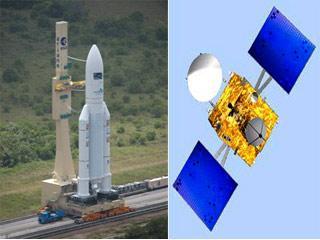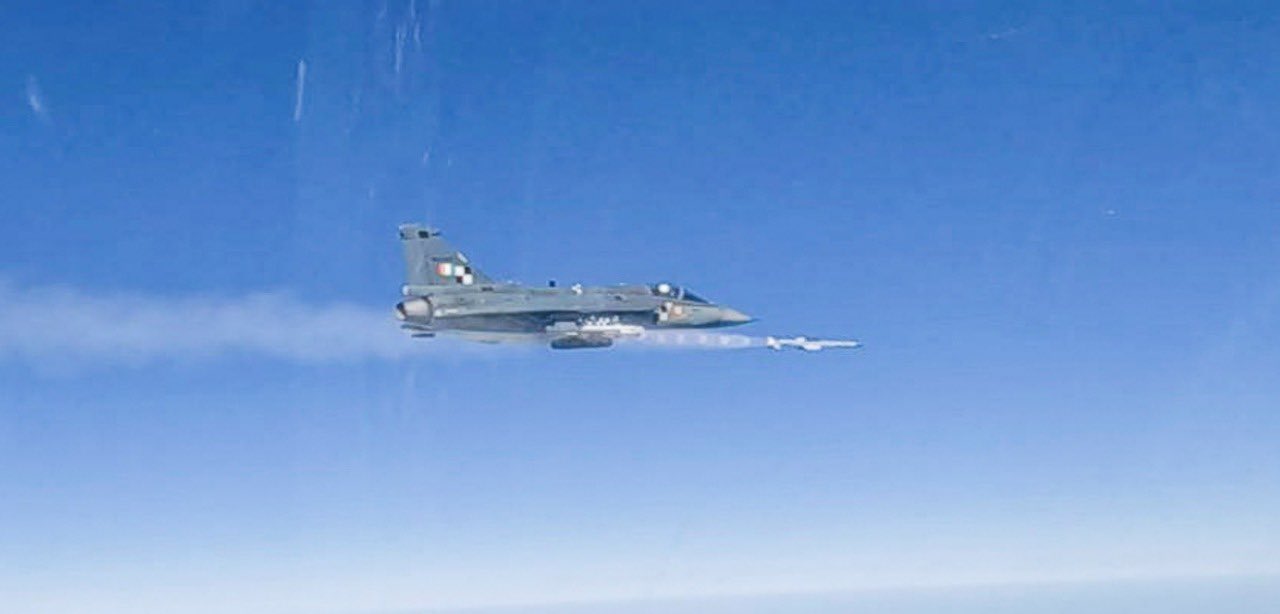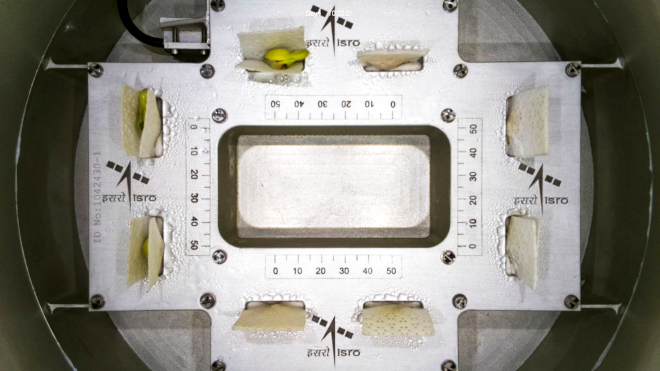
The Ariane-5 rocket (left) and a GSAT payload.
BANGALORE (PTI): India's advanced communication satellite GSAT-10 that would augment telecommunication, direct-to-home broadcasting and radio navigation services was successfully launched early Saturday on board Ariane-5 rocket from Europe's spaceport in French Guiana in South America.
At the end of a smooth countdown lasting 11 hours and 30 minutes, Ariane-5 ECA rocket injected GSAT-10 into an elliptical Geosynchronous Transfer Orbit (GTO), very close to the intended one, after a flight of 30 minutes and 45 seconds, Indian Space Research Organisation (ISRO) said.
At 3,400 kg at lift-off, GSAT-10 is the heaviest built by Bangalore-headquartered ISRO. GSAT-10 project is a Rs 750 crore mission that includes the cost of satellite, launch services by the European space consortium Arianespace and insurance.
Soon after GSAT-10 was hurtled into space, ISRO's Master Control Facility (MCF) at Hassan in Karnataka took over the command and control of the satellite and declared the launch of Indian space agency's 101st space mission a success.
"The satellite is in good health", ISRO said after checks on various subsystems of the spacecraft, adding all its parameters were satisfactory.
Blasting off from the launch pad at 2.48 am (IST), Arianespace's rocket first injected European co-passenger ASTRA 2F into orbit followed by GSAT-10.
With a 15-year design life, GSAT-10 is expected to be operational by November and will augment telecommunication, DTH and radio navigation services by adding 30 more to the much-in-demand transponder capacity, now hit by a crunch.
ISRO Chairman Dr. K Radhakrishnan, who was at MCF at Hassan at the launch, said, "By November 2012, we expect to operationalise GSAT-10 and make it available to the user community.
GSAT-10 is fitted with 30 transponders (12 Ku-band, 12 C-band and six Extended C-Band), which will provide vital augmentation to INSAT/GSAT transponder capacity.
With a scramble for transponders, India is now managing a significant part of its requirement by leasing foreign transponders to meet the domestic demand.
GSAT-10 also has a navigation payload -- GAGAN (GPS aided Geo Augmented Navigation) -- that would provide improved accuracy of GPS signals (of better than seven metres) to be used by Airports Authority of India for civil aviation requirements.
This is the second satellite in INSAT/GSAT constellation with GAGAN payload after GSAT-8, launched in May 2011.
GSAT-10 was originally scheduled for a Sept 22 launch, but was deferred after scientists detected a small glitch -- one gram of dust -- in the upper part of the rocket.
GSAT-10 Project Director T K Anuradha, Additional Secretary of Department of Space, S Srinivasan and Director of ISRO Satellite Centre S K Shivakumar were among key ISRO officials who were in French Guiana for the launch.
Shivakumar said GSAT-10 would give an impetus to the 'communication revolution' in India.
Arianespace Chairman & CEO Jean-Yves Le Gall said at the launch base that ISRO is a highly loyal customer, as the collaboration with it began more than 30 years ago with its Apple satellites orbiting by the third flight of an Ariane vehicle -- an Ariane 1 version launched in June 1981.
In the coming five days, orbit raising manoeuvres will be performed to place the satellite in the Geostationary Orbit with required inclination with reference to the equator, ISRO said.
The satellite will be moved to the Geostationary Orbit (36,000 km above the equator) by using the satellite propulsion system in a three step approach.
After the completion of orbit raising operations, the two solar panels and both the dual gridded antenna reflectors of GSAT-10 will be deployed for further tests and operations.
It is planned to experimentally turn on the communication payloads in the second week of October, ISRO said.
After the successful completion of all in-orbit tests, GSAT-10 will be ready for operational use by November. GSAT-10 will be positioned at 83 deg East orbital location along with INSAT-4A and GSAT-12.
 Previous Article
Previous Article Next Article
Next Article













The Indian Air Force, in its flight trials evaluation report submitted before the Defence Ministry l..
view articleAn insight into the Medium Multi-Role Combat Aircraft competition...
view articleSky enthusiasts can now spot the International Space Station (ISS) commanded by Indian-American astr..
view article